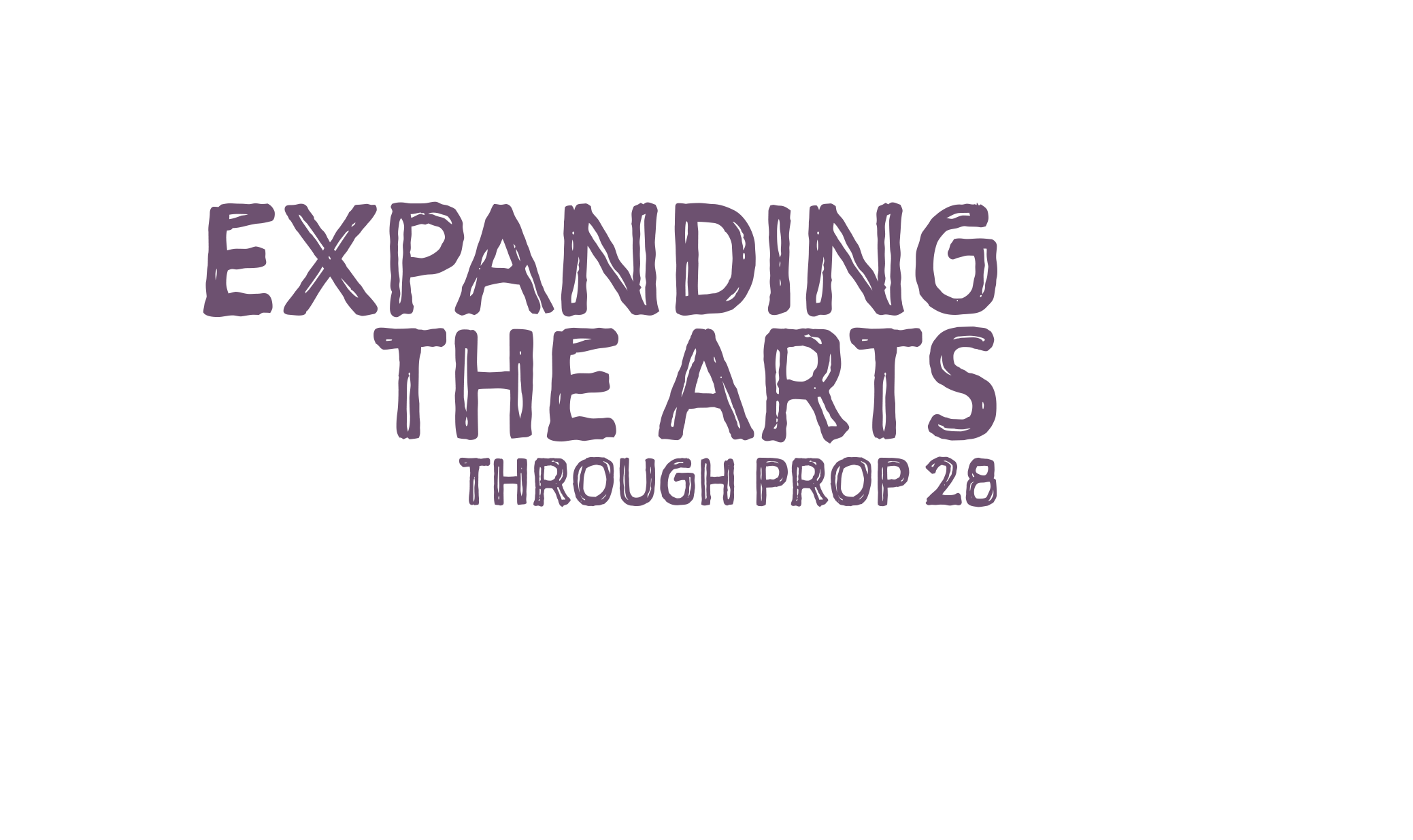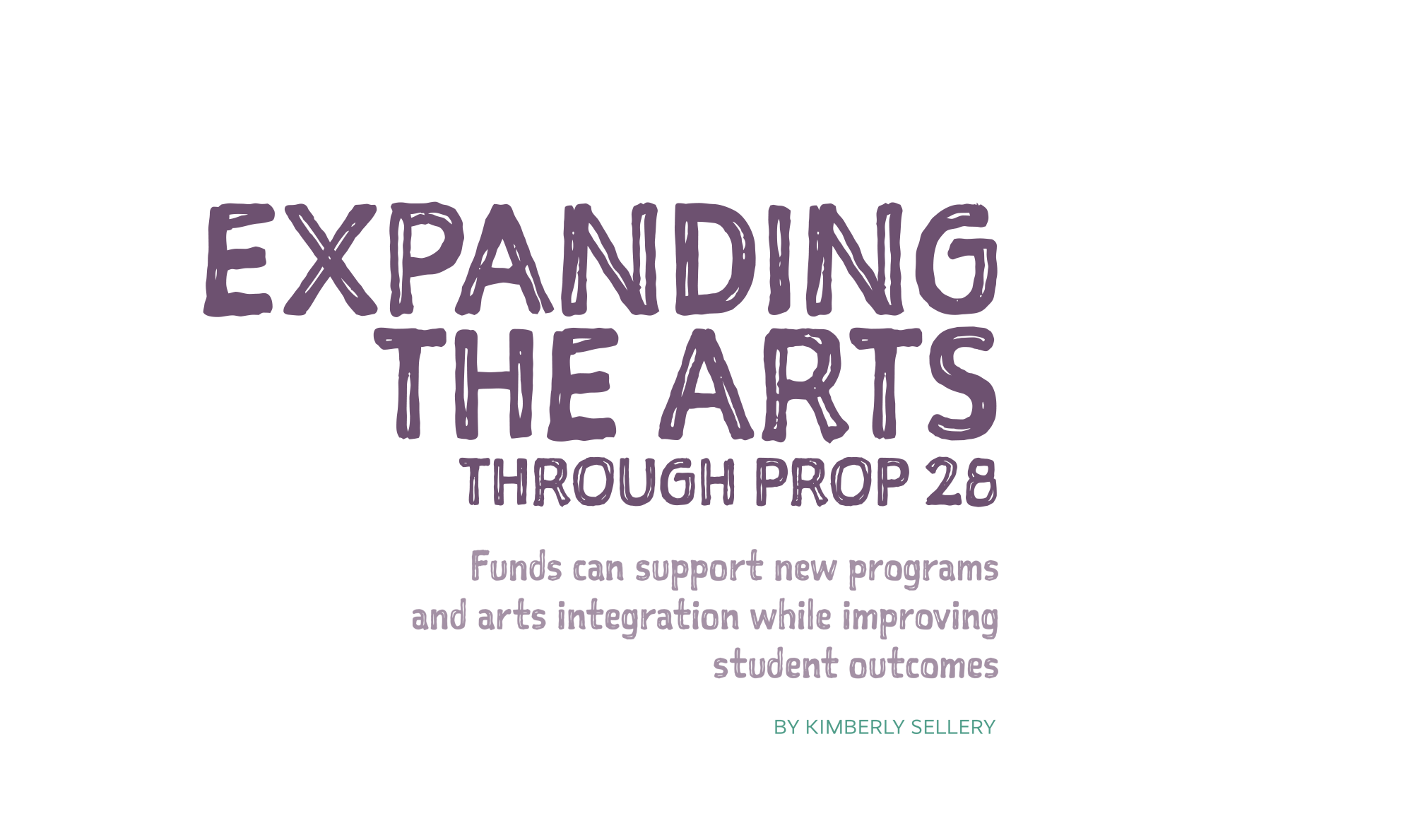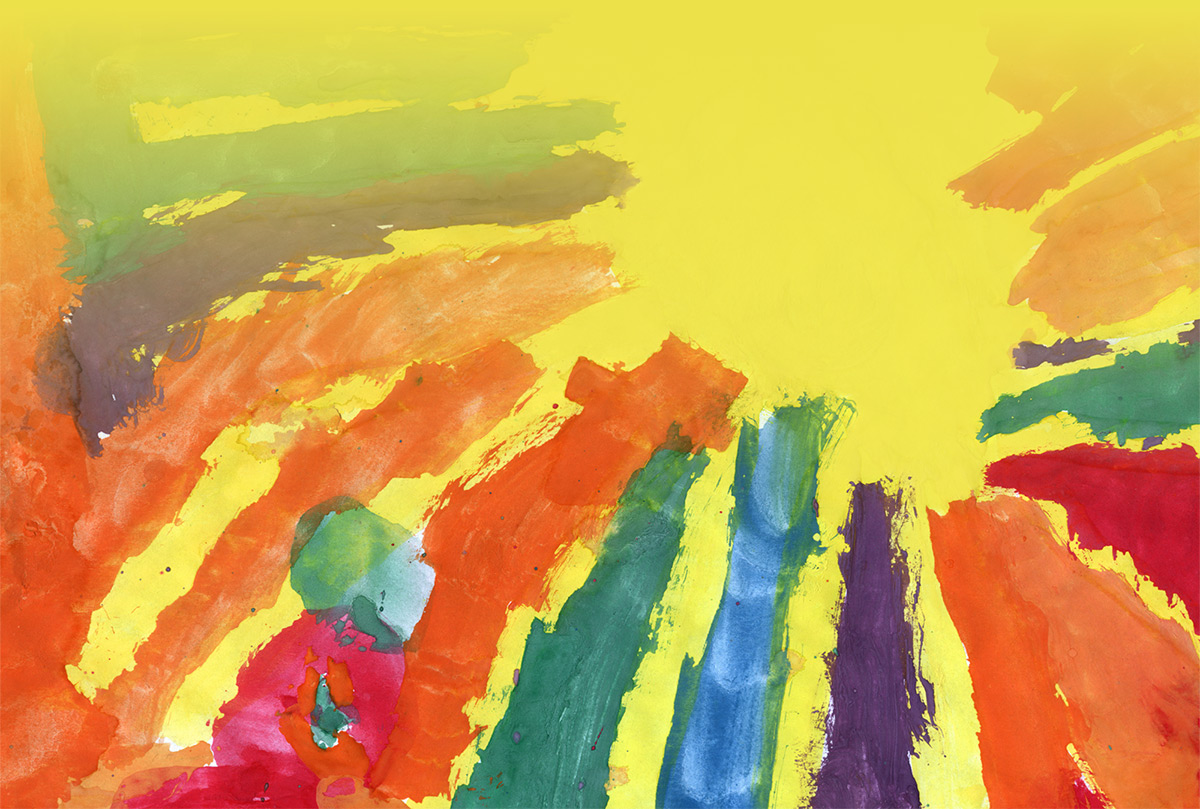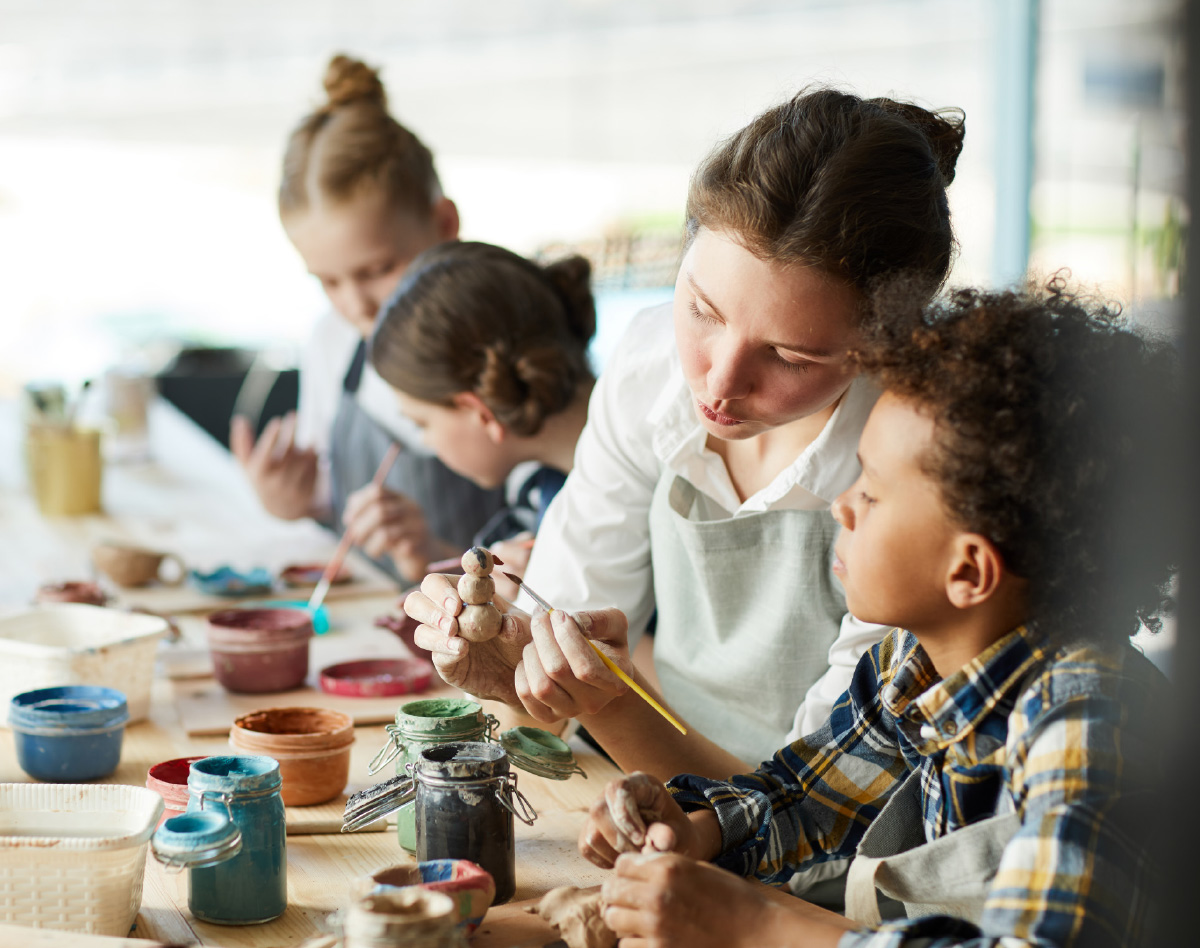
ith the overwhelming passage of Proposition 28, California voters threw their weight behind the importance of arts education in public schools. The Arts and Music in Schools Funding Guarantee and Accountability Act requires the state to establish a new, ongoing program supporting arts instruction in public schools beginning in 2023–24. The amount of funding available each fiscal year for the Arts and Music in Schools (AMS) program will be 1 percent of the TK-12 portion of the Proposition 98 Guarantee provided in the prior fiscal year. Gov. Gavin Newsom’s May Revision projected $933 million for the 2023–24 school year.


hile the California Department of Education is still working on specific guidelines at the time of this writing, the Legislative Analyst’s Office explained that Prop 28 funds will be distributed based on enrollment in preschool and K-12. Of the total amount, 70 percent will go to schools based on their share of statewide enrollment and the remaining 30 percent will go to schools based on their share of low-income students enrolled statewide. For some large districts, like San Diego Unified School District, this money equates to millions of dollars; while for small, rural local educational agencies like Cold Springs SD in Santa Barbara County, the funding won’t cover a teacher’s salary.
How LEAs in a state as diverse as California plan to spend the new funding often begins with considering what arts programs are already in place — Prop 28 funds must supplement, not supplant, current arts education efforts. The funding is meant to expand arts education access for all students, with extra funding for schools with economically disadvantaged students, who often receive the least exposure to the arts.
“Prop 28 is going to go a long way,” said San Diego USD Visual and Performing Arts (VAPA) Director Russ Sperling. “And I think the emphasis in understanding what the arts can do for kids — not just academically, but social-emotionally and the engagement bringing them to school — has been a real through line over the years. I think that we see more access, more equity to arts education programs now.”
The research organization released a follow-up report in November 2022, Creativity Challenge: The State of Arts Education in California, to measure progress made in schools and examine the systems of support for these programs, noting that the analysis was done during the 2019–20 school year, one that ended with school closures and a scramble to institute remote learning as the COVID-19 pandemic set in.
- At least 80 percent must be spent on certificated or classified employees to provide arts education*
- Up to 20 percent is for arts education support, including training, supplies, materials and arts educational partnership programs
- Up to 1 percent of total funds are allowable for LEA administrative costs to implement the proposition.
Although state education code stipulates that all students should have access to sequential, standards-based courses in dance, music, theater and visual arts, only 11 percent of school leaders said their schools offered all four disciplines — the same percentage as in 2006. Seventy-nine percent of schools, however, provided these courses in at least one of the arts disciplines — an improvement of 8 percentage points.
“Unfortunately, we’re not living up to our promise of providing a well-rounded education to students,” said Create CA Executive Director Tom DeCaigny. Create CA advocates for high-quality arts education for all students in the state through policy expertise and mobilizing a statewide network of partners.
“We have decades of research that show us the benefits of arts education,” DeCaigny continued. “I think the best body of research was commissioned through the U.S. Department of Education and their Arts in Education Model Development and Dissemination Grant Program. For over 15 years, they’ve been funding scientific research that looks at the impact of arts education on student learning. So, we know the arts increase student engagement and improve graduation rates. We know that it’s preparing students for the workforce of the future in terms of adaptability and the skills needed around communication and collaboration. Not to mention the value of students gaining empathy through the arts and being able to understand other cultures and understand others’ experiences through artistic disciplines.”
“We’ve always had music in the district but this type of commitment to music that’s going to nurture children and nurture the developing brain is within the last 15 years,” Scott said. “We’re trying to give these kids systematic music instruction by qualified instructors so that these children’s brain synapses would be able to fire in ways that they weren’t getting to do otherwise.”
While the four arts disciplines are offered to all students, the star of the district’s arts education programs is its focus on music. Every student in its five elementary schools gets weekly music instruction year-round. At Roosevelt Elementary, where 87 percent of students are economically disadvantaged and almost half are English learners, the Music Immersion Experience (MIE) is building students’ confidence and love of school and learning.
“I think the important thing was that we were focusing on the kids that needed the most attention,” Alvarado said. “The program was designed to bridge what they were learning in class with what they would learn after school in the music program. The intent was really to raise the boats and provide Roosevelt students with an opportunity to enter middle school with a competitive edge, if you will.”
The district’s data shows these focused efforts are paying dividends. Data analysis from the first three years of the program showed a 75 percent decline in discipline rates at Roosevelt Elementary. Smarter Balanced scores in English language arts improved by 22 points and in math by 15 points. The district is planning on evaluating the first graduating class to have gone through the MIE program next year. Anecdotally, teachers and staff alike note the difference in how students treat the school grounds and show pride by leaving spaces clean.

San Diego USD, the state’s second largest district, has also used data to evaluate programs and adjust when needed — a challenge in a district with nearly 200 school sites that have uneven implementation of arts education.
“In a district our size, we have to make sure we are activating the grassroots,” said VAPA Director Sterling. “I just talked to a parent who wants more arts access in her child’s elementary school — one that hadn’t really been on my radar.”
He explained how the central office arts team has been focusing on more partnerships to serve the district’s nearly 98,000 students. “Creating a contract is a lengthy process and it has been a barrier to getting arts in schools,” Sperling continued. “Now schools know, all I have to do is come up with the money and then I can use the contract that has already been created.”
San Diego USD has seen improvements in attendance for students on days they have art instruction. Sperling reports causal data the district has found looking at students who took art classes versus those who did not. The arts students saw a higher grade point average and higher graduation rates. The district has seen the most improvement in academic gains and arts integration in middle school.
“What is it that makes students want to wake up in the morning and get excited for?” asked Cold Spring SD Superintendent Amy Alzina. “Every student has either art or music or STEAM or garden or PE — it’s really about the student engagement component and that love of learning — that intrinsic love. It also ties into why we have really strong attendance.”
Board President Michael Marino shared the district’s goals for expanding their programs, such as building a new STEAM facility that would allow for further arts, academic and technological integration like a recording studio. “There’s such neurodiversity of these students and not everyone is going to learn the same way, so the fact that some students can engage through art or music or STEAM and it brings it all together, I think is actually why kids are so engaged at Cold Spring,” he said.
San Diego USD has relied on their arts strategic plan to get through hard financial times. Sperling shared how the district’s first plan in 2016 helped save arts from more severe budget cuts. “It’s an incredible messaging tool. It keeps us on track, it keeps us focused, it helps us make decisions about where to best strategically use resources at the end of the day,” he said.
Both districts sought assistance in creating their strategic plans — San Gabriel USD used expertise and resources from the Los Angeles County Arts Collective and San Diego Unified used a facilitator from the California Art Project (TCAP). TCAP is one of the nine California Subject Matter Projects, which seek to improve student learning through discipline-specific, research-based, sustained professional learning and leadership programs for TK-16 educators.
“To make strategic and lasting change, you need to have a plan and you need to keep revisiting it and growing it,” said TCAP Executive Director Kristine Alexander. “It starts with pulling together a district team — arts educators, district personnel, multiple subject teachers, special education and key community members — to start with some professional learning around what arts education is.”
Alexander and Kraus both point to the ideal starting place — the 2020 California Arts Standards and Framework, which both worked to update. They recommend a close reading of the framework’s Chapter 9: Implementing effective arts education.
And what are the districts in this story planning to do with their funds? San Diego USD, which is estimated to receive $15 million through Prop 28, is cautiously pushing out about half the funds to secondary schools to hire more arts teachers, especially in dance, which will be added to existing programs. San Gabriel USD, which is estimated to receive $780,000, will begin with expanding dance and theater in elementary schools and adding arts integration teachers on special assignment (TOSAs).
Cold Spring SD, which is estimated to receive $17,000, hopes that money can be used to help furnish the in-progress STEAM building. “As an advocate for small districts, I will say that small districts across the state aren’t getting a lot of funds,” said Superintendent Alzina. “I always advocate for a base rate for all small school districts so that you can do more for your programs. It’s not a lot of money right now, but we’re grateful.”